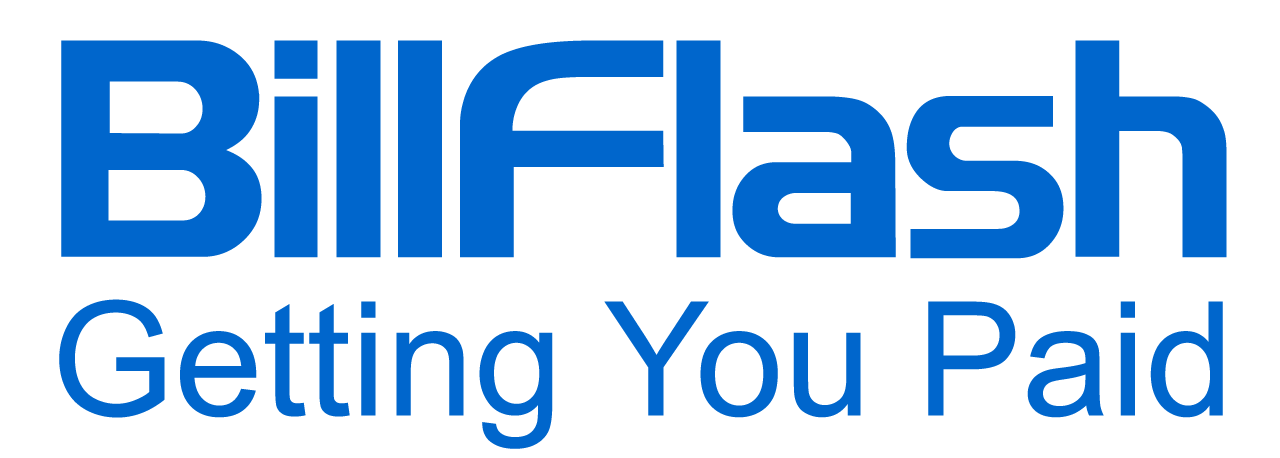Explore the signs that your practice has outgrown its billing workflow process and the benefits of upgrading to an all-in-one solution.
An efficient medical billing workflow process is key for maintaining the financial stability of any practice. A medical billing workflow captures every key step, from patient information and insurance verification to payments and accounts management. Initially, a simple spreadsheet or basic medical billing software might be enough. However, as patient volume grows, insurance regulations change, and reporting demands increase, outdated workflows can quickly become massive roadblocks.
Recognizing the signs that your practice has outgrown its current billing workflow process is the first step toward a healthier financial future. If coding errors, rising A/R days, and unhappy patients feel all too familiar, it's time to upgrade. Today, we'll share five signs that your practice has outgrown its billing workflow process and discuss the benefits of upgrading to a modern, all-in-one solution.
Sign #1: Staff Are Overwhelmed With Manual Tasks
One of the most visible signs that your billing workflow process is struggling to keep up with practice growth is your staff being burdened with time-consuming and repetitive manual tasks. Industry data show that 75% of providers primarily use paper and manual processes for collections, which means much of your staff's time is likely being taken up by these tasks. These can include manual data entry, where every patient detail, procedure code, and payment needs to be entered into the system by hand.
This is inefficient and susceptible to human errors, such as incorrect information, missed charges, and miscalculations. What might have been manageable at a smaller scale is now unsustainable as patient volume increases. Consider the tasks your staff handles manually: printing statements, stuffing envelopes, mailing invoices, hand-sending patient reminders, and manually posting payments. Every day, they must re-key information from one system to another and follow up on bills by phone or letter.

Increased Frustration From Staff
Healthcare organizations spend an estimated 15–30% of total expenses on administrative overhead, mainly due to these manual processes. Inefficient technology and billing systems that no longer match the needs of your practice can lead to increased frustration. High turnover rates in revenue cycle roles (sometimes 11–40%) also strain teams further. However, automation in healthcare delivers great improvements. Advanced systems can significantly reduce manual effort by handling repetitive tasks automatically.
One case study found that automating billing workflows reduced processing time by 48%. This is part of why BillFlash has built automation into every step of the billing workflow process. BillFlash automatically generates patient statements and payment reminders and sends them via mail, email, or text based on patient preferences. With BillFlash handling printing, mailing, and payment reminder notifications, your staff can focus on accuracy and patient service, and not so much on paperwork.
Sign #2: Payment Delays Are Increasing
If your accounts receivable days are way above the recommended or average industry benchmarks, it's a clear sign that your billing workflow process is no longer sufficient. In a healthy revenue cycle, you should collect most payments quickly. High-performing medical billing departments strive for 30 days or less in A/R. But for many medical practices, that's not the case anymore. Over half of medical practices reported rising A/R days, with many experiencing 40–50 days in A/R. Once you cross the 50-day mark, cash flow problems aren't just possible—they're highly likely.
When payments slow down like this, it usually points to gaps in your billing and collection process. Your team might miss follow-ups, use outdated payment options, or send confusing billing statements. Traditional approaches, like relying only on mailed paper bills, often create more problems. Patients might not even open a paper statement until weeks or months after their visit, and by then, it's harder to track them down to collect the payment. Without automation to collect unpaid balances, overdue bills start piling up.
Outdated payment methods can cause even more friction. If patients can't pay how they want to—online, on their phone, or at the office—they're more likely to wait. Patients expect a variety of payment methods, and a lack of flexibility can lead to frustration and delayed payments. That's where BillFlash can help your practice's billing workflow process. Practices using BillFlash have reported payment increases of up to 60% thanks to these processes:
PreBill
Your practice can request payments before the visit (even for telehealth) with PreBill. You can send patients a secure payment link using your EHR data, either via text or email. They can review and pay estimated charges in advance, boosting cash flow and minimizing post-visit collections.
eBills
eBills send digital statements via text or email on the same day a bill is created. Patients can view and pay online through our secure portal, PayWoot.com, giving them fast, flexible options to settle their balances.
PayReminders
This lets you automatically send up to three texts and three emails per month to patients with outstanding balances. Reminders are automatically scheduled and stop once payment is made. With high open rates for texts and emails, PayReminders helps practices collect payments an average of 9 days faster and can cut payment delays by up to 50%.
When you put these tools together, you create a smoother, faster billing workflow process:
- PreBill encourages upfront payments
- eBills make paying simple and immediate
- PayReminders keep patients engaged and on track
The result? Faster payments, fewer headaches, and happier patients. Your billing workflow process no longer acts as a bottleneck and becomes a key factor in your growth.

Sign #3: Too Many Systems, Not All-In-One Solution
As your practice grows, it's also natural to add more tools. You might add one for billing, another for payments, and another for collections. But over time, all these separate systems can start working against you. When platforms don't talk to each other, you end up with data silos, errors, delays, and plenty of wasted time. Data fragmentation makes it nearly impossible to get a complete picture of your financial health.
Think about it:
- Staff have to log into multiple systems, remember different passwords, and learn confusing interfaces
- Patient information has to be entered and updated across several databases, increasing the chances of mistakes
- Payment statuses have to be manually tracked across platforms, making follow-up harder and slower
This inefficient billing workflow process drains your staff's energy and slows your revenue cycle. Instead of focusing on patient care or higher-level tasks, your staff wastes valuable time keeping the systems afloat. The solution? An integrated platform that brings everything together. BillFlash connects with over 100 billing applications, providing a single, streamlined billing, payments, and collections system. Instead of going back and forth between platforms, your team sees all the important patient and financial information in one place.
It's not just about making life easier. BillFlash also offers real practice performance boosts:
- No more duplicate data entry
- Fewer manual errors
- Real-time, accurate updates across your entire revenue cycle
Plus, syncing all parts of your practice's financial system lets you automate major portions of the workflow. That means tasks like payment posting, follow-up reminders, and account routing can all run without constant staff intervention. Your practice runs smoother, your staff stays focused, and your cash flow stays strong.
Sign #4: Poor Visibility Into Financial Performance
You can't improve what you can't see. When your practice struggles to see its financial performance, updating your billing workflow process may be necessary. Tracking key metrics like payment trends, aging reports, or collections activity becomes challenging without strong reporting and real-time insights. For example, without up-to-date reports, you might not realize that patients respond faster to electronic statements than mailed ones.
When you don't have visibility, it becomes harder to:
- See how long it's taking to get paid
- Know how much you're collecting
- Identify which patients need follow-up
- Spot patterns in billing issues or common patient concerns
If you still rely only on manual reports or monthly spreadsheets, you’re already looking at outdated numbers when you review them. Outdated data leads to slower decisions, missed opportunities, and weaker cash flow. However, practices with real-time dashboards catch issues faster, adjust quicker, and get paid sooner. BillFlash gives you real-time insights into every corner of your billing and payment data.
With BillFlash, you stay fully in control of your revenue cycle, with access to:
- Detailed billing and payment reports
- Clear insights into what's working and what needs attention
- Option to include our Integrated Collection Service that automatically flags past-due accounts recommended for debt recovery efforts based on rules you set
Every practice needs real-time visibility, especially given the current state of the healthcare industry. With BillFlash, you can make smarter decisions, speed up reimbursements, and keep your practice's financial health strong and growing.

Sign #5: Patient Satisfaction Is Suffering
You already know that the billing experience can make or break patient relationships. Confusing bills, limited ways to pay, or no online payment options quickly turn a positive visit into a frustrating experience. It's a bigger problem than you might think:
- Nearly 80% of medical bills contain errors
- Around 40% of adults find medical bills confusing
If your patients receive unclear statements, can’t easily pay online, or don’t hear back about a bill, it’s doing more than just slowing down collections. It also affects the trust and satisfaction patients have in your practice. Surveys show that 56% of patients say clear billing statements and flexible payment options significantly impact their satisfaction with a provider.
That's why BillFlash prioritizes the billing workflow process and patient experience with tools like:
PayWoot.com
This is our secure, easy-to-use online portal where patients can view and pay their bills anytime. They can pay quickly with GuestPay (no account needed) or sign up to create an account and manage their payment history and preferences.
OfficePay
This allows patients to pay their bills at the office during their visit, making checkout stress-free. Patients can make payments using a card, check, Apple Pay, Google Pay, over the phone, and other convenient methods.
AutoPay and PlanPay
These allow patients to set up automatic or structured payment plans, helping them manage their healthcare costs without worry.
FlexPay
This provides interest-free financing options, making it easier for patients to manage larger medical expenses over time. With a quick application process that takes less than one minute to complete and a 90% approval rate, FlexPay ensures accessibility for most patients.
If you're hearing more complaints about confusing statements or noticing an increase in unpaid balances, it's a clear sign you need to check your billing workflow process. Integrating these BillFlash solutions can help you streamline your revenue cycle and build stronger, more positive relationships with your patients. Remember that billing doesn't have to be a pain point. The right tools can become an essential part of the care you provide.
It's Time for a Better Billing Workflow Process
If any of these five signs sound familiar, you're not alone. Many practices find themselves using an outdated billing workflow process. But billing workflows should help your practice grow, not hold it back. As your patient volume grows, your billing workflow needs to adapt accordingly. Holding onto outdated systems can lead to missed revenue, staff burnout, and constant poor patient experiences. But it doesn't have to be this way.
With features like PreBill for upfront payments, PayReminders to automate follow-ups, and eBills for instant digital statements, BillFlash empowers your practice to get paid faster with less effort. Schedule your free demo today and join over 60,000 providers who have transformed their billing workflow process with us. Now is the time to simplify your workflow, reduce delays, and provide the best experience for your team and patients.

